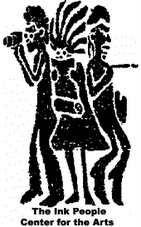Melanin, Grouping, Anatomy
Pleiotropy in the melanocortin system, coloration and behavioural syndromes
Article
In vertebrates, melanin-based coloration is often associated with variation in physiological and behavioural traits. We propose that this association stems from pleiotropic effects of the genes regulating the synthesis of brown to black eumelanin. The most important regulators are the melanocortin 1 receptor and its ligands, the melanocortin agonists and the agouti-signalling protein antagonist. On the basis of the physiological and behavioural functions of the melanocortins, we predict five categories of traits correlated with melanin-based coloration. A review of the literature indeed reveals that, as predicted, darker wild vertebrates are more aggressive, sexually active and resistant to stress than lighter individuals. Pleiotropic effects of the melanocortins might thus account for the widespread covariance between melanin-based coloration and other phenotypic traits in vertebrates.
ps. Is this accurate or not? Please inform. (Hat tip to Razib at Gene Expression)
=================================================================================================
Evolving forgiveness
"For instance, his description of Robert Axelrod’s work on game theory modeling and cooperation is extremely insightful and resounding proof that natural selection actually leads to a nicer world in the long run. Primate studies, as he describes them, also suggest that the standard response - and healthy - mechanism of closure to an act of aggression is forgiveness and reconciliation. Human psychology studies back this up, and identify the components of apologies that elicit forgiveness the best.
And in the next-to-last chapter, he debunks the notion that religion is the shortcut to forgiveness and compassion. True, as McCullough notes, religious individuals often forgive more readily - *if* the offender is part of the same social network, and particularly if the offender is part of the same religion. Moveover, devoutly religious individuals are more likely to exhibit more intolerant and vengeful attitudes towards offenders who are outsiders, on the margins of society, etc."
in sum: Group bonding requires internal similarity, external dissimilarity. ie. oil and water don't mix without surfactants due to differing polarities or so.
==============================================================================================
Your inner beast
Human anatomy article
Human anatomy is a formative experience in the training of future physicians -- it is the students' grand introduction to the body, when they memorize the names of bones, organs and nerves as they painstakingly dissect a real cadaver. That first year, as well as in years after, the medical students were curious about what kind of doctor I am. I am a fish paleontologist who studies finned creatures that have been extinct for more than 370 million years. Seeing the history inside our bodies is like peeling an onion: The first layers we see reveal the history we share with primates (large brains and opposable thumbs). Peel deeper and we find the layers of history shared with other mammals (hair and breasts), reptiles (our distinctive way of chewing food), fish (arms, legs, backbones and heads), worms (an anus on one side of the body and a mouth on the other), jellyfish (the DNA recipe that builds our bodies), sponges (our many celled bodies) and so on.


Tiada ulasan:
Catat Ulasan